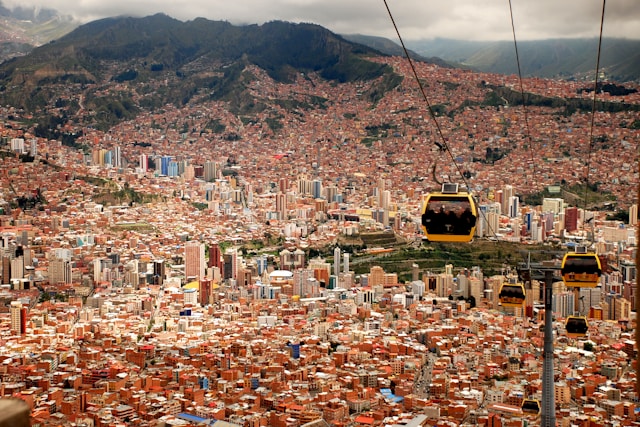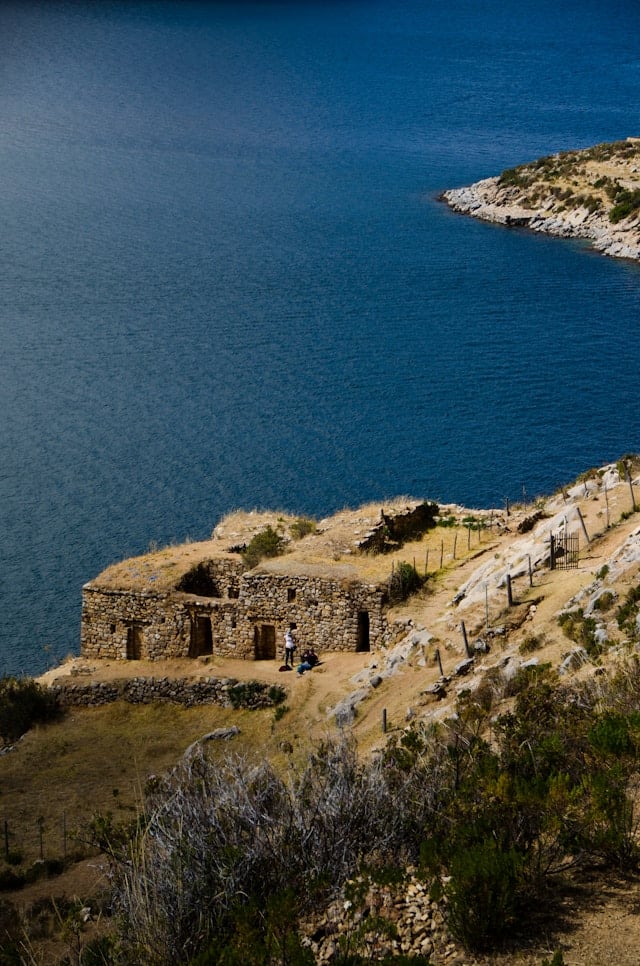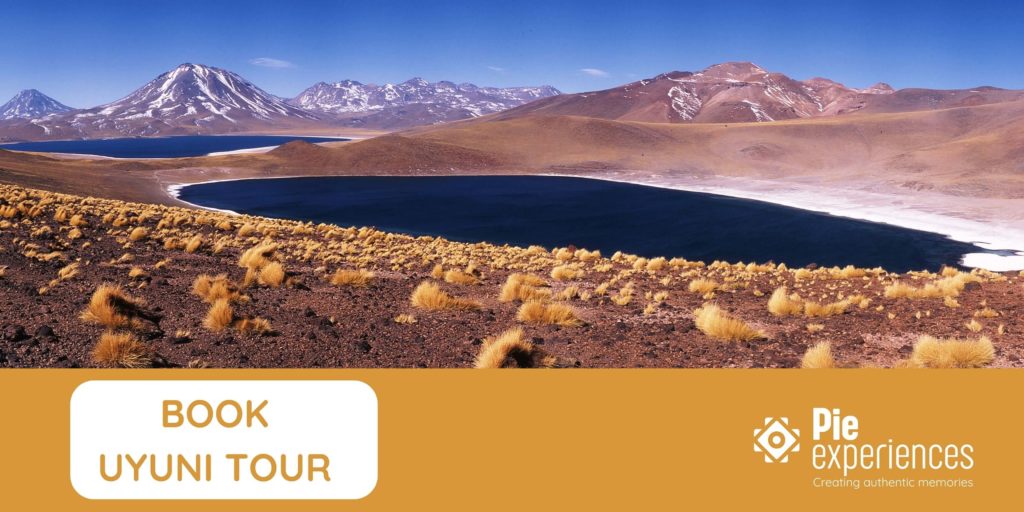Traveling from Puno to Bolivia is one of the most scenic and culturally rich experiences in South America. Whether you’re heading to Copacabana, La Paz, or exploring Lake Titicaca, there are multiple ways to cross the border safely and comfortably. This 2025 guide explains the best transportation options, border crossing procedures, visa requirements, and insider travel tips to help you make the journey smooth and enjoyable.
Our detailed travel guide will help you plan an enjoyable trip from Puno to Bolivia. As seasoned travelers with over 15 years of global travel experience, we understand the fascination of discovering new places and immersing oneself in the beauty of different cultures. Join us as we travel the magnificent route from Puno to Bolivia, where every twist and turn offers excitement and discovery.
When going from Puno to Bolivia, safety is a top priority. Rest assured, dear adventurers, that the voyage is not only breathtaking but also safe for travelers like us. We’ve traveled these routes several times and can vouch to the breathtaking scenery that unfolds along the way. We usually recommend traveling during the day to properly experience the breathtaking views and ensure a safe and pleasant journey.
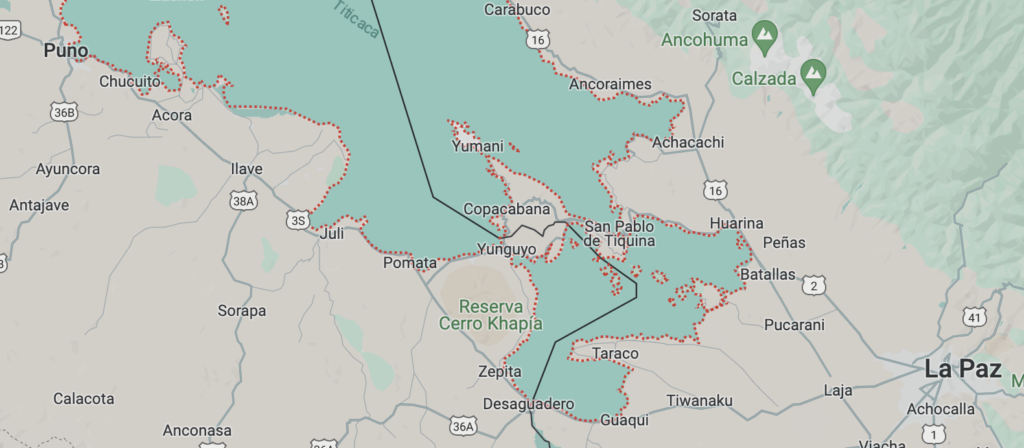
Best Ways to Travel from Puno to Bolivia
Route 1: Puno to Bolivia via Desaguadero
Setting out from Puno, travelers can embark on a scenic journey to Bolivia via Desaguadero. This route typically takes around 4-5 hours by bus or private transportation, depending on traffic and road conditions. As fellow explorers, we’ve marveled at the breathtaking vistas and encountered the warmth of local communities that dot the landscape.
For those seeking adventure, traveling through Desaguadero offers a unique opportunity to immerse yourself in the vibrant tapestry of Andean culture. We’ve relished the chance to explore bustling markets, sample delicious street food, and connect with locals who have welcomed us into their homes with open arms.
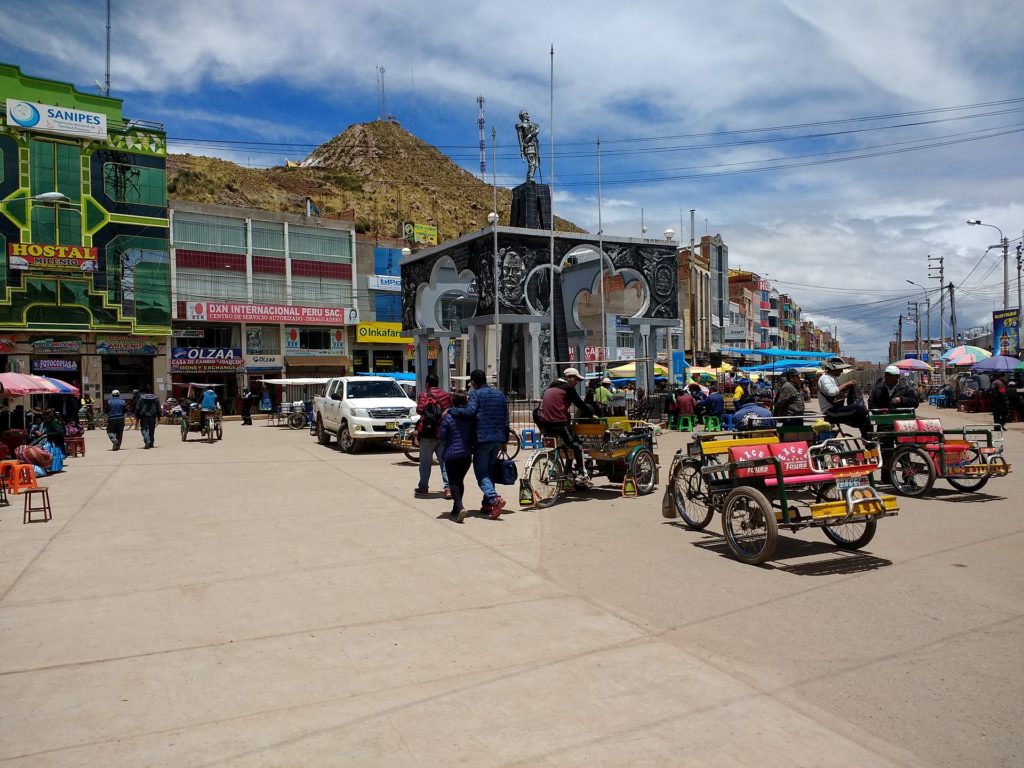
De Mx._Granger – Trabajo propio, CC0, https://commons.wikimedia.org/w/index.php?curid=64670444
Route 2: Direct Bus from Puno to Copacabana-Puno to Bolivia via Copacabana
For a more scenic route to Bolivia, consider journeying through Copacabana. This picturesque town, nestled on the shores of Lake Titicaca, has captured our hearts with its undeniable charm. As passionate travelers, we’ve strolled along its cobblestone streets, marveled at its whitewashed buildings, and savored the tranquility of its azure waters.
Arriving in Copacabana is like stepping into a postcard-worthy paradise. We’ve spent hours exploring its hidden gems, from the iconic Basilica of Our Lady of Copacabana to the bustling markets teeming with colorful wares. And let’s not forget the culinary delights that have tempted our taste buds, from freshly caught fish to mouthwatering local specialties.
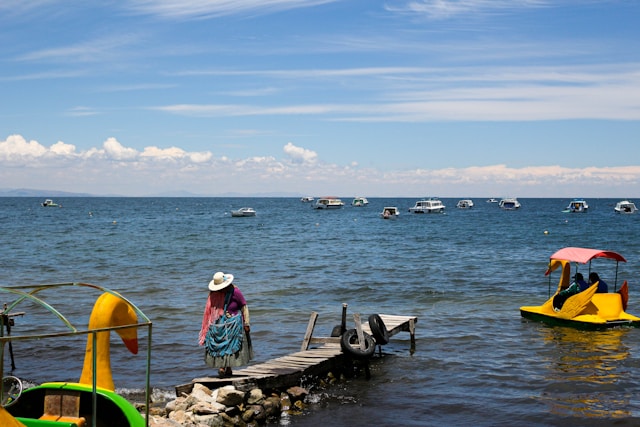
https://unsplash.com/es/@vallistos
Safety Tips for Crossing the Peruvian Border to Bolivia
When traveling from Puno to Bolivia, safety should always be a top priority. Stick to well-traveled routes and avoid traveling alone, especially at night. Keep your belongings secure and be vigilant of your surroundings at all times. Additionally, stay informed about any travel advisories or security concerns in the region to ensure a smooth and secure border crossing.
It’s important to note that while the route through La Paz may be shorter, it’s not always the safest option compared to the serene beauty of Copacabana. As travelers who prioritize safety above all else, we recommend taking the scenic route through Copacabana for a more secure and enjoyable journey.
Are you an American Citizen traveling from Puno to Bolivia?
For American citizens (USA) planning to journey from Puno to Bolivia, it’s essential to understand the entry requirements and procedures for crossing the border. Bolivia welcomes travelers from around the world, including the United States, but it’s crucial to be prepared and informed before embarking on your adventure.
Upon reaching the border crossing between Peru and Bolivia, American citizens will need to present a valid passport with at least six months’ validity remaining. Additionally, travelers may be required to provide proof of onward travel, such as a return ticket or itinerary, demonstrating their intention to leave Bolivia within the permitted timeframe.
It’s worth noting that visa requirements for American citizens vary depending on the purpose and duration of your stay in Bolivia. While tourist visas are typically granted upon arrival at the border for stays of up to 90 days, it’s essential to verify the current visa regulations with the Bolivian consulate or embassy before your departure.
Top Bus Companies for Crossing from Puno Peru to Bolivia
When crossing the border from Peru to Bolivia by bus, visitors have various respectable bus operators to select from. These businesses offer convenient and dependable transportation for crossing the border and continuing your journey into Bolivia. Some of the top bus companies for crossing the border are:
- Trans Titicaca: Known for its efficient service and comfortable buses, Trans Titicaca offers routes between Puno and Copacabana, making it a popular choice for travelers heading to Bolivia.
- Tour Peru: Tour Peru operates routes between Puno and La Paz, providing travelers with a convenient and scenic way to cross the border. The company offers comfortable buses equipped with amenities to ensure a pleasant journey.
- Bolivia Hop is a popular hop-on-hop-off bus service that operates in Bolivia, offering flexible travel options for exploring the country. With Bolivia Hop, travelers can enjoy the freedom to customize their itinerary, stopping at various destinations along the route.
With these tips in mind, you’re ready to embark on an unforgettable journey from Puno to Bolivia. As seasoned travelers who have embarked on countless adventures, we invite you to embrace the spirit of exploration and discover the wonders that await in Bolivia. So pack your bags, fellow wanderers, and get ready to write your chapter in the travelogue of life!
What to Expect on the Journey
Whether you’re crossing from Puno to Bolivia by bus, private transfer, or tour, knowing what to expect along the way will help make your experience smooth and stress-free. Below, we break down key details about the journey, including travel time, road conditions, border formalities, and useful local tips.
Tip: Bring snacks, water, and motion sickness pills if you’re sensitive to winding roads.
Entry Fees, Stamps & Immigration Procedures
When crossing the border from Puno to Bolivia at the Kasani checkpoint, travelers go through both Peruvian and Bolivian immigration offices—usually located just a few meters apart.
Here’s what to expect:
-
Exit stamp (Peru): Your passport will be stamped at the Peruvian office first.
-
Entry stamp (Bolivia): Next, you’ll head to the Bolivian side for entry procedures.
-
Visa fees (if applicable):
-
US citizens: May need to pay a visa fee (~$160 USD, multiple entry, valid 10 years).
-
EU/UK/Canada: Usually free for tourism (30–90 days, depending on passport).
-
Others: Check updated requirements based on nationality.
-
You may be asked to show:
-
Proof of onward travel (e.g., bus ticket out of Bolivia)
-
Proof of accommodation
-
Yellow fever vaccination (rarely requested for highland travelers, but officially recommended)
✅ Tip: Have cash in USD ready for visa fees, as card payments are often not accepted.
Local Tips for a Smooth Experience
To ensure your journey from Puno to Bolivia goes smoothly, consider the following tips:
-
Leave early: Most border crossings are smooth in the morning; avoid late afternoon when queues build up.
-
Use tourist services: Reputable companies like Bolivia Hop or private transfers handle immigration assistance and offer bilingual guides.
-
Currency exchange: Exchange a small amount of Peruvian soles to Bolivianos before crossing, or at the border (rates vary).
-
Toilets & snacks: Bring your own toilet paper and small snacks, as facilities at the border are basic.
-
Internet & SIM cards: Once you cross into Bolivia, Peruvian SIM cards won’t work. You can buy a Bolivian SIM in Copacabana or La Paz.
-
Border closures: Though rare, check for national holidays or strikes that might affect border operations.
✅ Pro Tip: Take a few minutes to enjoy the view of Lake Titicaca at the border—it’s one of the highest navigable lakes in the world!
Frequently Asked Questions (FAQ) – Traveling from Puno to Bolivia
Do I need a visa to travel from Puno to Bolivia?
It depends on your nationality.
US citizens: Yes, a tourist visa is required (~$160 USD).
EU, UK, Canada, Australia: Usually no visa required for stays up to 30 or 90 days.
Other nationalities: Check with the nearest Bolivian consulate.
Always carry your passport, proof of accommodation, and proof of onward travel to avoid issues at the border.
Is it safe to cross the border from Puno to Bolivia?
Yes, the Kasani border crossing is one of the safest and most commonly used routes between Peru and Bolivia.
It’s well-frequented by tourists
Both immigration offices are close to each other
Most travelers cross during daylight hours with no issues
🟢 Tip: Use trusted transport companies and avoid nighttime travel for extra safety.
What is the best way to travel from Puno to Bolivia?
The best and most popular way is via a tourist bus or private transfer from Puno to Copacabana.
Other options include:
Public bus (cheaper, fewer services)
Boat tours (via Lake Titicaca, usually part of a tour package)
Tourist buses often assist with border formalities, offer bilingual support, and are more comfortable.
How long does it take to travel from Puno to Bolivia?
Puno to Copacabana: ~4–5 hours (including border crossing)
Puno to La Paz: ~8–10 hours total
Times vary depending on traffic, immigration lines, and weather conditions.
Where is the border crossing located?
The main land border crossing from Puno to Bolivia is at Kasani, near Yunguyo, Peru.
It’s about 145 km from Puno
Located near the shores of Lake Titicaca
The crossing is used by most buses and private vehicles
Are there toilets, food, and services at the border?
Basic services are available near the Kasani border, including:
Public toilets (bring toilet paper)
Small snack vendors and money changers
Local SIM cards may be available once inside Bolivia
For comfort, it’s best to bring your own water, snacks, and essentials.
Can I exchange money at the border?
Yes. You can exchange Peruvian soles to Bolivian bolivianos at or near the border, but:
Rates vary depending on demand and availability
It’s safer to exchange small amounts for immediate use
Larger exchanges are best done in Copacabana or La Paz
Will my Peruvian SIM card work in Bolivia?
No. Once you cross into Bolivia, you’ll need to purchase a Bolivian SIM card to access mobile data or make local calls.
Popular providers include Entel and Tigo. Cards are inexpensive and widely available in Copacabana or La Paz.



